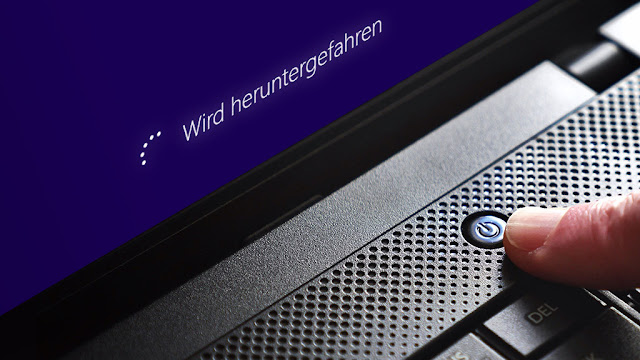DA SSDs have high Megabytes / second transfer rates and low access times, they stab each hard drive in terms of pace. In almost all modern computers and ultrabooks, the nimble flash drives. The reverse side: An SSD is used for each storage process. Therefore, PC users should be careful not to write too many gigabytes on the drive. The "less is more" mentality occurs Windows with feet: The operating system loads SSD memory quite enormously - in the default setting! When you shut down, Win8 and 10 write several hundred megabytes on it.
The fast boot mode wears off SSDs
The dilemma is responsible for a function to achieve acceleration: the fast-start mode. It has existed since Windows 8 and is intended to help PCs to speed up booting - the lame Windows 7 boot technology can not compete on Windows tablets with iPad & Co. The process, which is sometimes called hybrid boot, also shortens up and down: in the latter process, Windows writes parts of the working memory to the drive. Similar to the rest state, Windows does not have to re-read everything at the following startup: The system draws the system kernel and driver from the sleep state driver file C: \ Hiberfil.sys. And now the cracking point: When it is shut down, the memory process is repeated!
While hard disks do not usually matter, SSDs suffer in the long run. You can not handle any number of write actions. Because each time an important silicon oxide insulation layer of the SSD wears out. This layer prevents electrons from flowing out and is essential for drive operation. After too much writing, Windows may freeze on such a damaged SSD; The drive is not a secure storage space for documents & more.
Turn off a potential SSD killer
Although the fast start function alone does not destroy SSD, especially since the storage media depending on the model according to the manufacturer several Terabyte written. An indication of Total Bytes Written or TeraBytes Written (TBW) in data sheets will be displayed. Still, Windows encourages wear, and anyone who is already running intensive applications, such as video editing, uses the memory even faster. SSDs are now mainly used in modern PCs. The Good: They often work so fast that the fast-start acceleration is a well-intentioned idea, but by no means absolutely necessary. Turn it off as a precaution!
Many gigabytes / day come together
In the background, drives internally collect data about their health. Among other things, the write volume capture SSDs. COMPUTER BILD tested the SSD write load on a Medion Erazer notebook for gamers (MD 99557) - and read them several times in succession with activated and deactivated quick start. The analysis done CrystalDiskInfo Portable . On the notebook there was a fresh Windows-10 installation (Home, 64 Bit). Background software was not active except for the Autostart programs Windows Defender, Microsoft OneDrive and Realtek HD Audio Manager as well as basic Windows services.
Test result: write load when the turbo is active
If the hardware check program initially showed a value of the so-called host writes of 3.888 GB, it was 3.888 after the next shutdown and 3.889 GB, then 3.889 GB, finally 3.890 GB, again 3.890 GB, then 3.891 GB. The list could be continued. The application does not display comma values. A sample with CrystalDiskInfo Portable and SSDlife on another notebook confirmed the write load; SSDlife could only successfully write the write volume on the second mobile computer.
Test result: write load when the turbo is deactivated
The gigabyte load is initially at 3,891, remained unchanged in the following six downhill start combinations. The value is generally not increased with Windows reboots: The quick start does not work here - but to restart the machine, restarting is not suitable.
